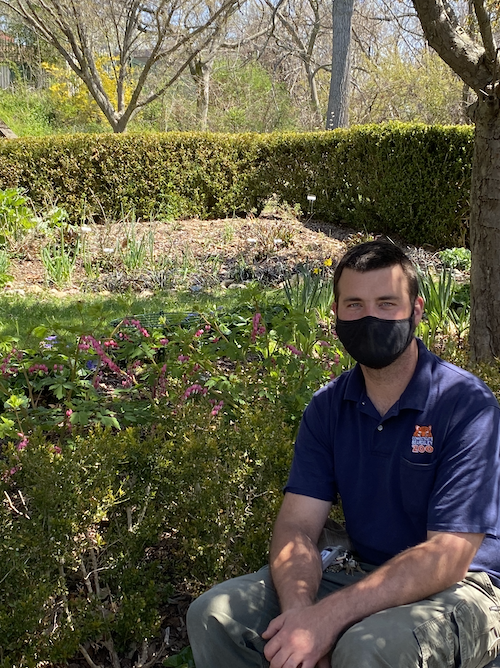
BRIDGEPORT, Conn. – In an important collaboration with The Pollinator Pathway program, Connecticut’s Beardsley Zoo has joined the chain of properties with gardens that support butterflies, bees, hummingbirds and other pollinators. With multiple gardens throughout the Zoo grounds emphasizing the important connection between animals, people and plants, the Zoo was already recognized as a Monarch Waystation and as a Certified Wildlife Habitat through the National Wildlife Federation.
“The Pollinator Pathway designation is one more way to signal the Zoo’s role as a community leader in supporting wildlife and wild places,” said Horticultural and Greenhouse Manager Jonathan Dancho. “Our emphasis is on planting food sources for pollinators, using plants native to Connecticut, and not relying on chemicals to maintain the beauty of the Zoo grounds.”
One important plant that the Zoo has included in its gardens is milkweed (Asclepias), both a food source and a host plant for Monarch eggs laid on the underside of the leaves.
Although the Zoo is lushly planted with pollinator-friendly species throughout the grounds, special gardens in addition to the Butterfly Gardens include the Sensory Garden, where volunteers maintain plants with fragrance and interesting textures, the Browse Garden, where foodstuff and plants used for enrichment are raised for the animals, the Rose Arbors, and the rare and beautiful plants found in the Victorian Greenhouse. There are also rain gardens that collect water runoff in porous earth, preventing it from reaching nearby waterways, and ponds placed to provide habitat for amphibians.
“We want to educate guests so they know that what they do in their own gardens at home is making a positive impact for beneficial insects and birds,” said Dancho. He recommends that at least two thirds of the garden should be native plants, using either trees, shrubs or flowering plants as a food source. Just as important is to provide clean water, and foregoing pesticides.
Connecticut’s Beardsley Zoo joins dozens of towns and properties throughout the state listed as Connecticut Pathways. More information can be found at pollinator-pathway.org
About Connecticut’s Beardsley Zoo’s Pollinator Gardens
The Zoo has seven butterfly/pollinator gardens, and several other planting areas that use native plants to attract butterflies. Native plantings are also used in and around animal habitats to provide colorful flowers for guests and nectar sources for pollinators. Plants that help pollinators in more than one way are extremely helpful, such as Asclepias tuberosa (Butterfly Weed). Butterfly Weed is a native plant used throughout the life cycle of monarchs, from chrysalis through adulthood. It is also a nectar source for a wide range of other butterflies and beneficial pollinators.
About Connecticut’s Beardsley Zoo
Let your curiosity run wild! Connecticut’s only zoo, celebrating its 99th year, features 350 animals representing primarily North and South American and Northern Asian species. Guests won’t want to miss our Amur tigers, Amur leopards, maned wolves, Mexican gray wolves and red wolves. Other highlights include our new Spider Monkey Habitat, the prairie dog exhibit, and the Pampas Plains with Giant anteaters and Chacoan peccaries. Guests can grab a bite from the Peacock Café and eat in the Picnic Grove. Connecticut’s Beardsley Zoo is a non-profit organization approaching its 100th year at a time when the mission of helping fragile wildlife populations and ecosystems is more important than ever.
Covid-19 safety rules remain in effect. Tickets must be purchased on the Zoo’s website at beardsleyzoo.org. Face masks are required for everyone over the age of two, with the exception of those with medical conditions that preclude wearing them. Social distancing is mandated throughout the Zoo.
PHOTO: Jonathan Dancho